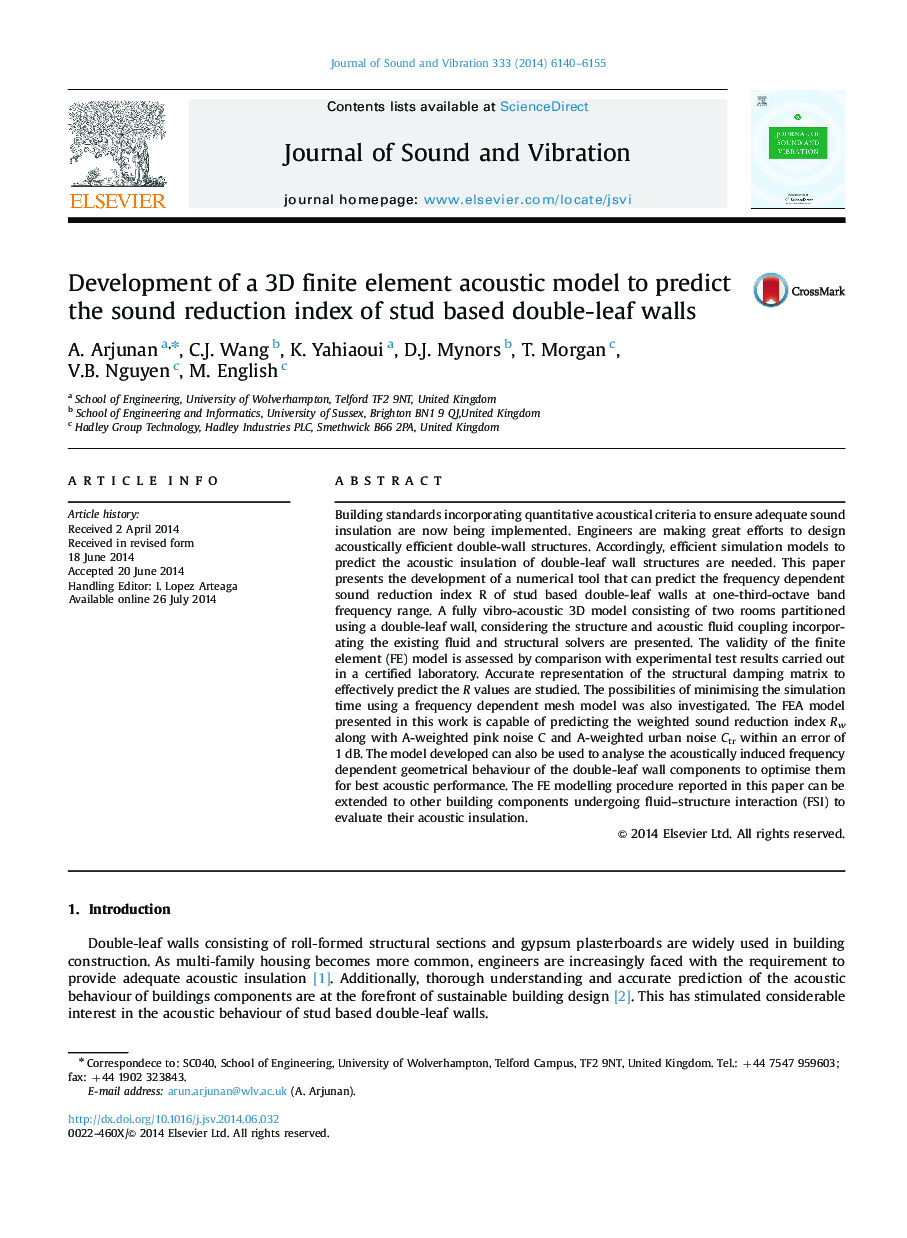| Article ID | Journal | Published Year | Pages | File Type |
|---|---|---|---|---|
| 287873 | Journal of Sound and Vibration | 2014 | 16 Pages |
•3D FEA of a double-leaf wall to predict the sound reduction index is presented.•The effect of fluid–structure interaction (FSI) on acoustic behaviours is analysed.•The finite element model developed is validated using experimental test results.•The effect of frequency dependent structural damping matrix is analysed.•The procedure presented can be extended to analyse other components undergoing FSI.
Building standards incorporating quantitative acoustical criteria to ensure adequate sound insulation are now being implemented. Engineers are making great efforts to design acoustically efficient double-wall structures. Accordingly, efficient simulation models to predict the acoustic insulation of double-leaf wall structures are needed. This paper presents the development of a numerical tool that can predict the frequency dependent sound reduction index R of stud based double-leaf walls at one-third-octave band frequency range. A fully vibro-acoustic 3D model consisting of two rooms partitioned using a double-leaf wall, considering the structure and acoustic fluid coupling incorporating the existing fluid and structural solvers are presented. The validity of the finite element (FE) model is assessed by comparison with experimental test results carried out in a certified laboratory. Accurate representation of the structural damping matrix to effectively predict the R values are studied. The possibilities of minimising the simulation time using a frequency dependent mesh model was also investigated. The FEA model presented in this work is capable of predicting the weighted sound reduction index Rw along with A-weighted pink noise C and A-weighted urban noise Ctr within an error of 1 dB. The model developed can also be used to analyse the acoustically induced frequency dependent geometrical behaviour of the double-leaf wall components to optimise them for best acoustic performance. The FE modelling procedure reported in this paper can be extended to other building components undergoing fluid–structure interaction (FSI) to evaluate their acoustic insulation.
Graphical abstractFigure optionsDownload full-size imageDownload as PowerPoint slide
